Ahh cheese. Whether sampling a cheese board or a slice of your favourite pizza, who can resist the aromas, flavours and textures that cheese offers? With so many varieties available, you are spoilt for choice when choosing what kind to eat or what type to add to a meal. There’s a real art to cheese production and depending on where the cheese comes from, this determines the taste and quality of the final product.
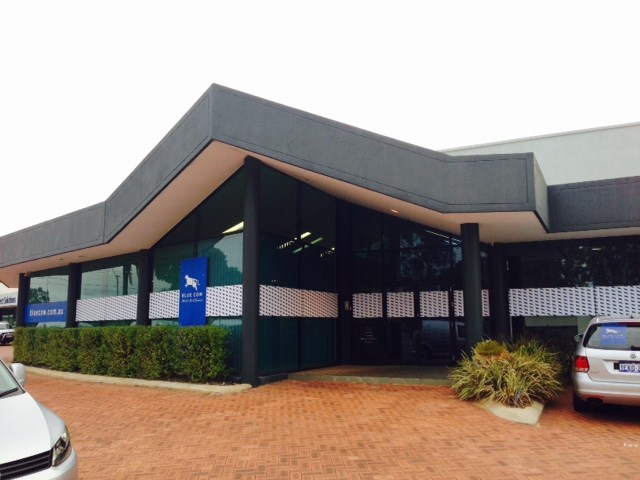
Blue Cow Cheese Company premises located in Belmont
Blue Cow Cheese Company is a Western Australian business, founded in 1998 by Nick Bath. They import cheese directly from Europe as well as sourcing from all across Australia. No doubt you would have seen their logo in hotels, restaurants and specialty retailers. Blue Cow Cheese Company supply more than 600 business outlets across the state. They also brand their own range of dairy products.
Early this month, Blue Cow Cheese Company hosted their first annual Taste and Terroir night for 2016. Held at their storage facility in Belmont, a combination of chefs, retailers, food connoisseurs and bloggers were invited to listen to the history of Italian cheeses presented by renowned Italian Food Specialist Kimon Georgiou. The opportunity also allowed us to sample some of the wonderful produce Blue Cow Cheese Company supplies, delicately matched with wines from some of the best regions in the world.
Upon arrival, we were treated to a taste of Trentingrana cheese and wine – Andreola Verv Prosecco extra dry. It is a mountain cheese made from milk coming exclusively from the farms in the Trentino region. Grana refers to a family of hard, maturing cheese from Italy that have a granular, flaky texture. This cheese resembles Parmigiano-Reggiano however is slightly less crumbly and milder in flavour. It was well matched with the Prosecco which had pleasant floral aromatics with a mild acidity.
Kimon Georgiou with owner of Blue Cow - Nick Bath
Nick and Kimon have a real passion for all things cheese. Kimon placed the four main animals of the dairy sector – cow, goat, sheep and buffalo on the Italian map and looked at the routes of each animal over history and how they’ve shaped the flavours of food across Italy. He discussed the most famous Italian cheeses and the correlation between dairy and cuisine.
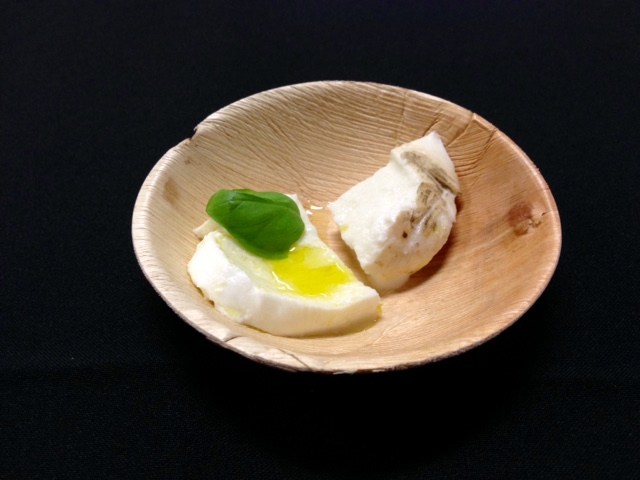
The first sample of the evening was a tasting of mozzarella - one plain drizzled with basil oil and the other smoked. Kimon explained that the Campania Buffalo Mozzarella is frozen for transport but actually develops in flavour over the few days that it takes to thaw out. The plain mozzarella is soft and silky in texture and the basil olive oil added a lovely distinctive, fresh flavour however didn’t overpower the milky flavour of the cheese. The smoked version was quite strong and although I like the flavour of smoked food, particularly salmon, I did find this to be quite intense on its own.
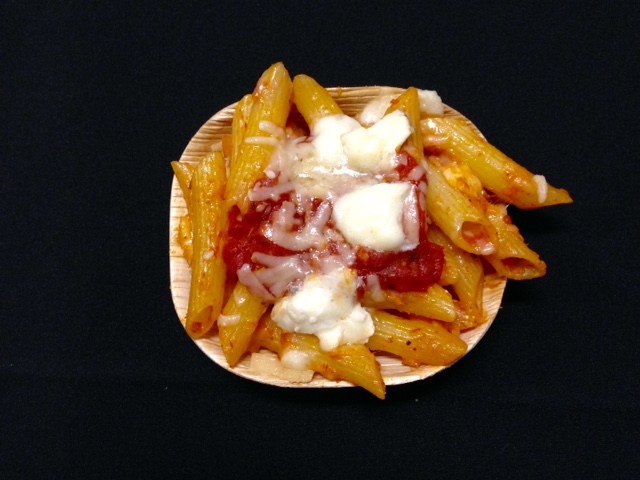
Kimon discussed how Italians tend to eat simply but are known for using the best ingredients. We were presented with penne pasta dish that was made using a basic assortment of ingredients. It was tasty example of how using quality products can produce a really delicious meal.
This Penne with Smoked Buffalo Mozzarella was cooked in the oven and was a combination of the following ingredients:
Extra virgin olive oil
1 white onion – peeled and finely chopped
2 cloves of garlic, peeled and finely sliced
1-2 dried red chillies, crumbled
700ml passata
1 large handful of fresh basil leaves
Sea salt & freshly ground black pepper
500g Penne
150g Trentingrana cheese, freshly grated
300g Buffalo Smoked Mozzarella
Our next sample consisted of Bosina Robiola, La Tur Robiola and Rocchetta Robiola. At the risk of offending the cheese masters, these three cheeses resembled Brie or Camembert to me. This was served with a white wine - Tenuta Carretta Cayega - 2013.
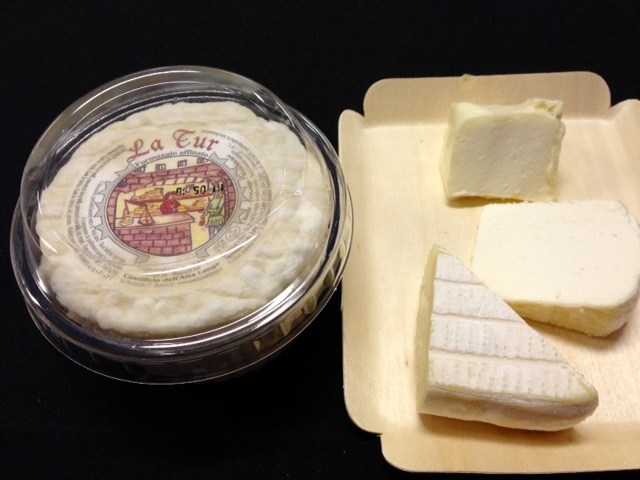
The La Tur Robiola is mild in flavour and from the Langhe region in Northern Italy. It is made from pasteurized cow, sheep and goat milk with a tender, white crust. The taste is buttery, milky and fruity with a round and creamy after taste.
Rocchetta Robiola is also a cheese made from goat, cow and sheep milk. Made in the Tuscany region of Italy, the rind of this cheese is thin and soft. The paste is creamy and has a sweet flavour. The aftertaste is pleasant, with hints of fresh grass.
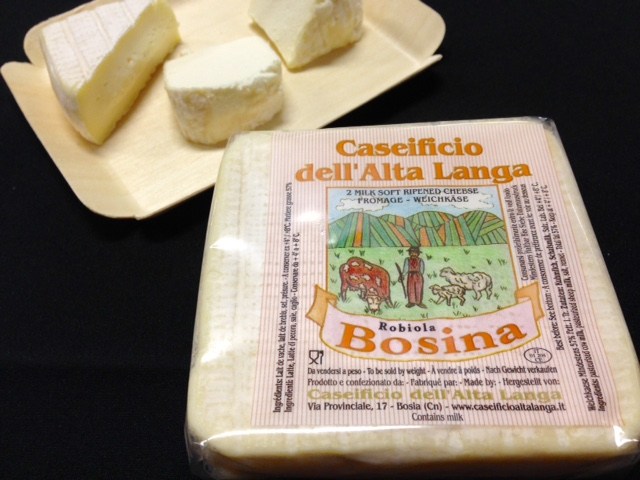
Bosina Robiola is a made from pasteurized cow and sheep’s milk. The colour of the rind is ivory white while the paste is the colour of light straw. The texture is soft and creamy and tastes dolce (sweet).

Three types of Pecorino served with a red wine - Tenuta Carretta Barbera d’Alba
The cheeses so far, with the exception of the pasta dish, were sampled independent of any other flavours so it was interesting to then try three types of Pecorino with a slice of bread. Scoperino - Emilia Romagna with a plain sourdough, Pecorino Debbene - Sardinia with rye sourdough and Pecorino Romano – Sardinia with dried fruit bread. With the addition of bread, it altered the flavour of the cheese as each had varying degrees of sweetness, earth and aftertaste. I preferred the Pecorino Romano – Sardinia with dried fruit bread as it broke up the flavour and after so many cheese samples, I was pretty cheesed out.
To finish off the evening, we were presented with dessert, two types of Éclairs. One filled with cream made from Fior d’ Arancio Mascarpone and topped with caramelized orange peel and the other filled with Tosi Gorgonzola doce Mascarpone cream topped with caramelized walnuts. It was an interesting combination for a dessert that you would typically expect to be sweet. The choux dough was not as crisp as it should be, I think due to it being made a lot earlier in the day and then the topping soaking into the pastry. I particularly liked the orange peel, which had a sweet, pungent flavour. The filling in both were quite overpowering with the taste of blue cheese. I sampled both éclairs but it was a definitely an acquired taste.

It was an informative evening at the Blue Cow Cheese Company and they host different events throughout the year on their premises. Information on these evenings can be found on their website at www.bluecow.com.au. The Taste & Terroir night was definitely the perfect opportunity to expand my knowledge on cheese and understand how this delicious product is produced.
